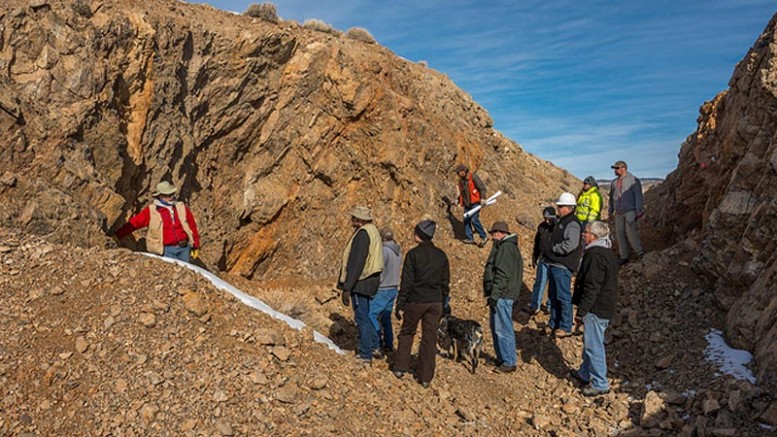Pershing Gold (NASDAQ: PGLC) is closer to turning the past-producing Relief Canyon heap-leach gold mine in Nevada into one of the newest producers in the Silver state.
“This is not an early-stage exploration project. This is an emerging gold producer that we are on the cusp of bringing back into production,” Jack Perkins, the company’s vice-president of investor relations, said in a webcast from the Sidoti 2016 Emerging Growth Convention in New York.
Relief Canyon is 150 km northeast of Reno, Nev. It sits 20 minutes from a highway, with paved roads and available water and electricity on-site. “This is not a project out in the bush somewhere,” Perkins said.
Relief Canyon is in the southern part of the Pershing gold and silver trend, along the Humboldt Range. The trend hosts several gold and silver deposits, including Coeur Mining’s (NYSE: CDE) Rochester mine, and has historically yielded more than 5.7 million equivalent oz. gold. Pershing aims to add to this shortly.
Since acquiring Relief Canyon — comprising three pits and a fully built heap-leach processing facility — for US$20 million in 2011, Pershing has been eliminating production hurdles.
It expects to make a production decision by mid-year on the back of a resource update and preliminary economic assessment (PEA), both due in the second quarter.
Under the direction of CEO Stephen Alfers, who joined in early 2012, the junior consolidated Relief Canyon’s land claims. Its land position grew from 1.1 sq. km to 250 sq. km. This allowed for unrestricted access to the pits and processing facility, as well as potential expansion and exploration opportunities.
Over the past four years, Pershing has increased the project’s resource more than 500%. According to a July 2015 resource estimate, Relief Canyon boasts 739,000 oz. gold (from 37.3 million tonnes at 0.69 gram gold per tonne) in measured and indicated, which is up 34% from the 2014 estimate. It also has 70,000 oz. gold (from 6.9 million tonnes at 0.34 gram gold) in inferred.
Perkins notes that over 99% of the current resource is oxidized and readily amenable to heap leaching. “This is an oxide deposit and it leaches beautifully.”
Along with updating the resource, Pershing strengthened its operating team. It received permits to start the 14,000-ton-per-day (12,700-tonne-per-day) processing facility and mine material from the existing disturbance at Relief Canyon. It also completed metallurgical, engineering and geotechnical test work.
This culminated in the junior publishing a preliminary internal economic study for Relief Canyon in late 2015. Based on the current resource and a US$1,100 per oz. gold price, it would cost US$11 million to bring the mine back online. “It is incredibly low,” Perkins remarked.
The initial capital would include costs to relocate the crusher, install a refinery and expand the leach pad.
Relief Canyon has an initial six-year mine life and projected cash costs of US$695 to US$745 per oz., with all-in sustaining costs of US$725 to US$775 per oz.
Perkins reckons costs could decline by incorporating the higher current gold price of US$1,230 per oz., and the upcoming resource estimate. The 2016 resource update will incorporate results from Pershing’s aggressive 2015 drill program, including 29,000 metres of development core drilling. They will go into the upcoming PEA.
The PEA is unique, as the processing facility is already on-site. “Usually when you hear ‘PEA,’ you think, ‘Jesus, this company is four to five years out to production.’ Not with us,” Perkins said.
Pershing intends to do metallurgical and technical work alongside the PEA and begin production shortly after. Given the mine’s low initial costs, it will skip the feasibility study, Perkins reveals.
On the permitting front, the junior anticipates receiving a permit modification in the second quarter, which would expand the mineable area to the orebody above the water table.
Once received, it will submit another modification to expand mining on the orebody below the water table.
“This seamless process allows us to start mining much earlier than would be possible if we were to go for the full permit, all at one point in time,” Perkins noted. “It is a common and successful strategy in Nevada.”
The debt-free junior exited 2015 with US$3.2 million in cash. It raised US$13.4 million in financings in the first quarter of 2016, including a US$6-million private placement on March 29.


Be the first to comment on "Pershing Gold’s Relief Canyon nears production"